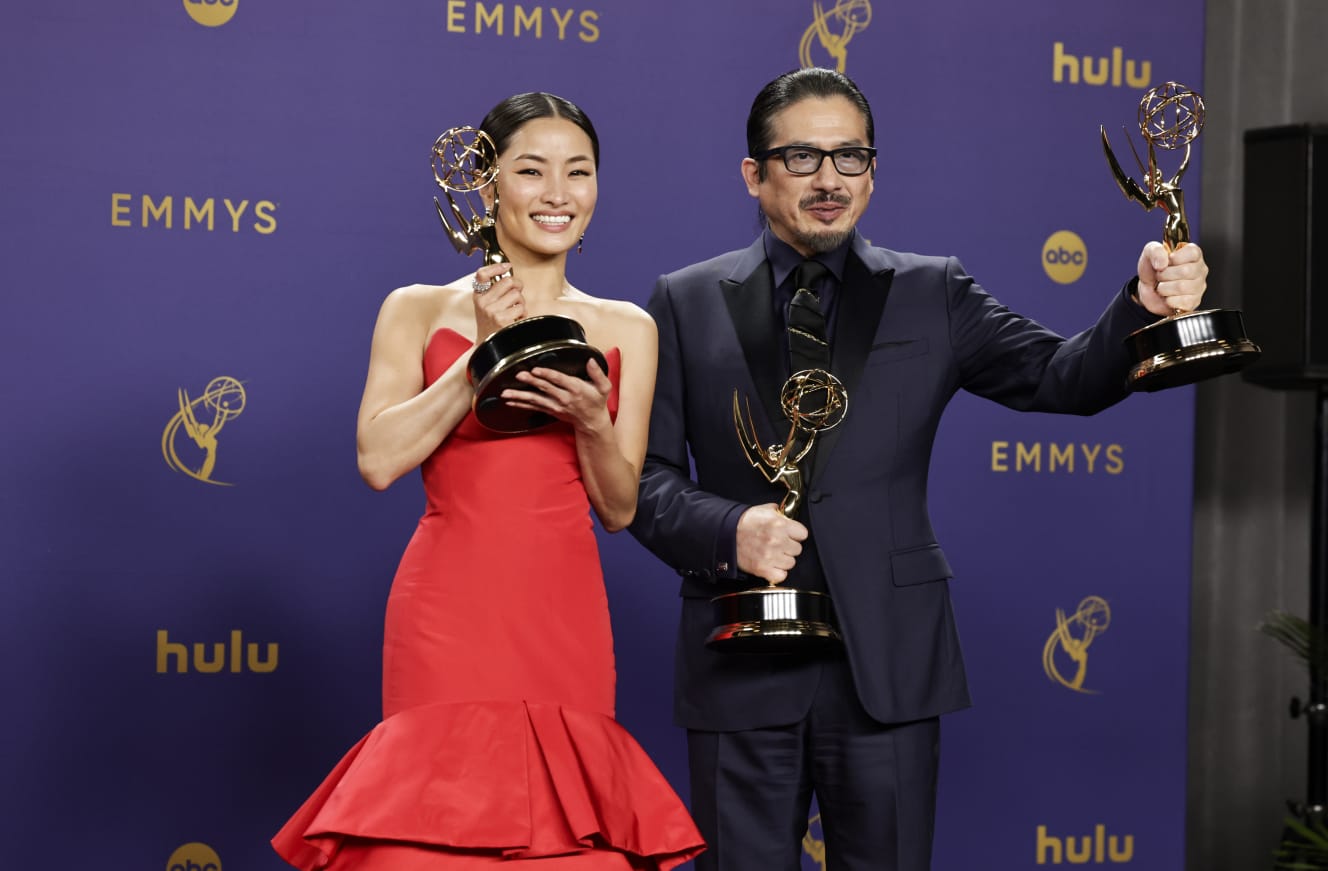Record 18 Wins at Emmy Awards for SHOGUN and Hiroyuki Sanada’s Commitment to Authenticity Since His 20s
The drama series ‘SHOGUN,’ produced by FX and starring Hiroyuki Sanada as lead actor and producer, achieved a historic milestone by winning a record 18 Emmys at the 76th Primetime Emmy Awards held in Los Angeles on September 15 (local time), often referred to as the Academy Awards of the American television industry.
Sanada became the first Japanese actor to win the Lead Actor Award. The series also won awards for Outstanding Production, Lead Actress for Anna Sawai, and Directing.
The Hollywood-scale production cost of over 10 billion yen
For FX, this is the highest production budget to date, with a staggering amount said to exceed 10 billion yen, typical of Hollywood. The historical drama ‘Shogun,’ set on the eve of the Battle of Sekigahara, features Hiroyuki Sanada portraying Yoshii Toranaga, modeled after Tokugawa Ieyasu, with overwhelming presence and depth.
As a producer, Sanada is committed to authenticity, primarily casting Japanese actors. He brought in experienced staff from Japan, paying meticulous attention to historical accuracy, samurai movements, and dialogue. The series features 70% Japanese dialogue, with English subtitles in the U.S., resulting in a grand historical drama of high quality that even Japanese viewers can appreciate.
Initially planned as a limited series, ‘Shogun’ became a hit, recording 9 million views within six days of its first two episodes’ release in February. As a result, seasons 2 and 3 were announced in May, with Sanada continuing as lead actor and producer, and Cosmo Jarvis reprising his role as Miura Anjin.
Sanada’s journey began in 2003 when he appeared in the Hollywood film ‘The Last Samurai’ with Tom Cruise, leading him to relocate to Hollywood in 2005. He has since built his career in Hollywood with films like ‘Rush Hour 3′ (2007) starring Jackie Chan, ’47 Ronin’ (2013) with Keanu Reeves, ‘Minamata’ (2020) starring Johnny Depp, and ‘Bullet Train’ (2022) featuring Brad Pitt. It can be said that ‘Shogun’ represents the culmination of his 20-year journey.
In the past, Japan was often depicted with the odd phrases “Fujiama” and “Geisha.” While these portrayals have improved, Hiroyuki Sanada’s stoic commitment to authenticity stems from his experiences as an action star in the late 1970s and 1980s.
He joined the Himawari Theatre Group at the age of five and began his career as a child actor. In 1973, upon entering junior high school, he joined the Japan Action Club (JAC) founded by Shinichi Chiba. After appearing in Chiba’s film ‘Direct Hit! Hell’s Fist’ (1974), he temporarily paused his entertainment activities to focus on his studies. In 1978, he passed the audition for ‘The Conspiracy of the Yagyu Clan,’ and with Chiba’s blessing, he resumed his career under the name Hiroyuki Sanada.
In 1980, he gained popularity as an action star with his film debut in ‘Ninja Bugei-cho: Momochi Sandayu,’ where he performed a jump scene from the Momoyama Castle keep. In ‘Roar of the Iron Fist’ (1981), he executed stunts without a double, jumping from a helicopter into the sea at Tojinbo in Fukui Prefecture. At that time, he was competing with Toshihiko Tahara for the top spot in sales of idol photo cards, showcasing his immense popularity.
The true meaning behind “I am always scared”
In July 1981, just before the release of the film ‘Roar of the Iron Fist,’ I had the opportunity to interview Hiroyuki Sanada at a restaurant in Roppongi, Tokyo. He was 20 years old at the time.
Regarding the intense action scenes without a stunt double
“There are karate fight scenes, as well as action sequences on top of a moving double-decker bus. There’s even a scene where I jump from a helicopter 25 meters down into the sea.”
His words conveyed a strong commitment to authenticity.
When asked if he felt any fear,
“I’m always scared. That’s why I become cautious. I organize everything beforehand, thinking, ‘This is okay, if I fall there, I’ll be fine,’ and once I confirm safety, I can be bold. So I don’t get injured in dangerous scenes. But in lighter scenes, if I let my guard down, I might get hurt.”
His stoic dedication and professionalism left a strong impression.
In 1982, he co-starred with Keiko Matsuzaka in ‘Dotonbori River,’ and in ‘Satomi Hakkenden’ (1983), his love scene with Hiroko Yakushimaru garnered attention. He continued to shine in numerous films and dramas, including ‘The Wandering Chronicles of Mahjong’ (1984), before taking off for Hollywood.
His commitment to authenticity in stunts and acting, cultivated during his years as an action star in his 20s, laid the groundwork for his success in Hollywood and led to this historic achievement. We look forward to Sanada’s continued rise.
Writer: Ryo Sakamoto (Writer, former head of the Culture and Society Department of Tokyo Sports Newspaper) PHOTO: AP/Afro
